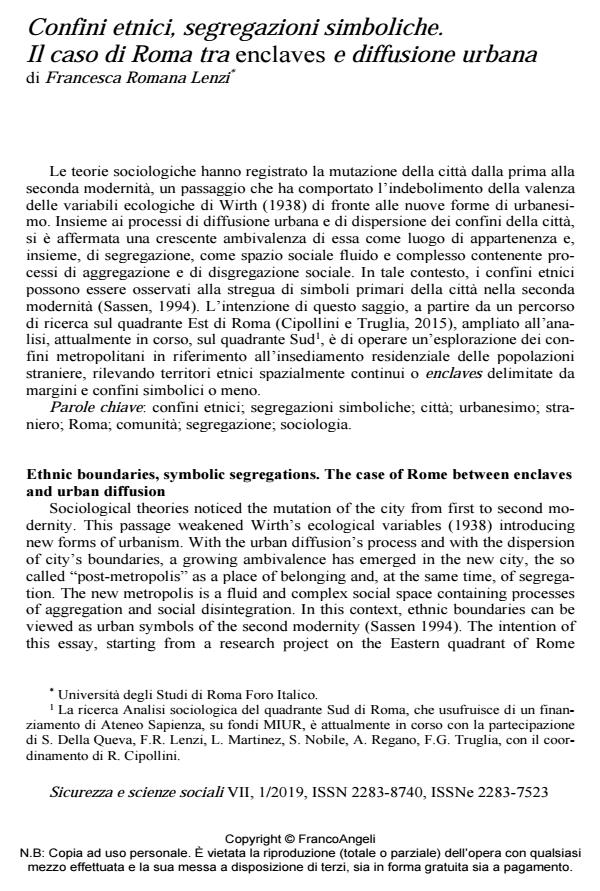Ethnic boundaries, symbolic segregations. The case of Rome between enclaves and urban diffusion
Journal title SICUREZZA E SCIENZE SOCIALI
Author/s Francesca Romana Lenzi
Publishing Year 2019 Issue 2019/1
Language Italian Pages 21 P. 171-191 File size 261 KB
DOI 10.3280/SISS2019-001015
DOI is like a bar code for intellectual property: to have more infomation
click here
Below, you can see the article first page
If you want to buy this article in PDF format, you can do it, following the instructions to buy download credits

FrancoAngeli is member of Publishers International Linking Association, Inc (PILA), a not-for-profit association which run the CrossRef service enabling links to and from online scholarly content.
Sociological theories noticed the mutation of the city from first to second mo-dernity. This passage weakened Wirth’s ecological variables (1938) introducing new forms of urbanism. With the urban diffusion’s process and with the dispersion of city’s boundaries, a growing ambivalence has emerged in the new city, the so called "post-metropolis" as a place of belonging and, at the same time, of segrega-tion. The new metropolis is a fluid and complex social space containing processes of aggregation and social disintegration. In this context, ethnic boundaries can be viewed as urban symbols of the second modernity (Sassen 1994). The intention of this essay, starting from a research project on the Eastern quadrant of Rome (Cipollini, Truglia, 2015), extended to the analysis, currently in progress, on the South quadrant, is to carry out an exploration of the metropolitan boundaries of Rome, with a focus on the residential settlement of foreign populations, detecting spatially-continuous ethnic territories or enclaves bounded by margins and sym-bolic boundaries.
Keywords: Ethnic boundaries; symbolic segregations; city; urbanism; foreigner; Rome; community; segregation; sociology.
Francesca Romana Lenzi, Confini etnici, segregazioni simboliche. Il caso di Roma tra enclaves e diffusione urbana in "SICUREZZA E SCIENZE SOCIALI" 1/2019, pp 171-191, DOI: 10.3280/SISS2019-001015